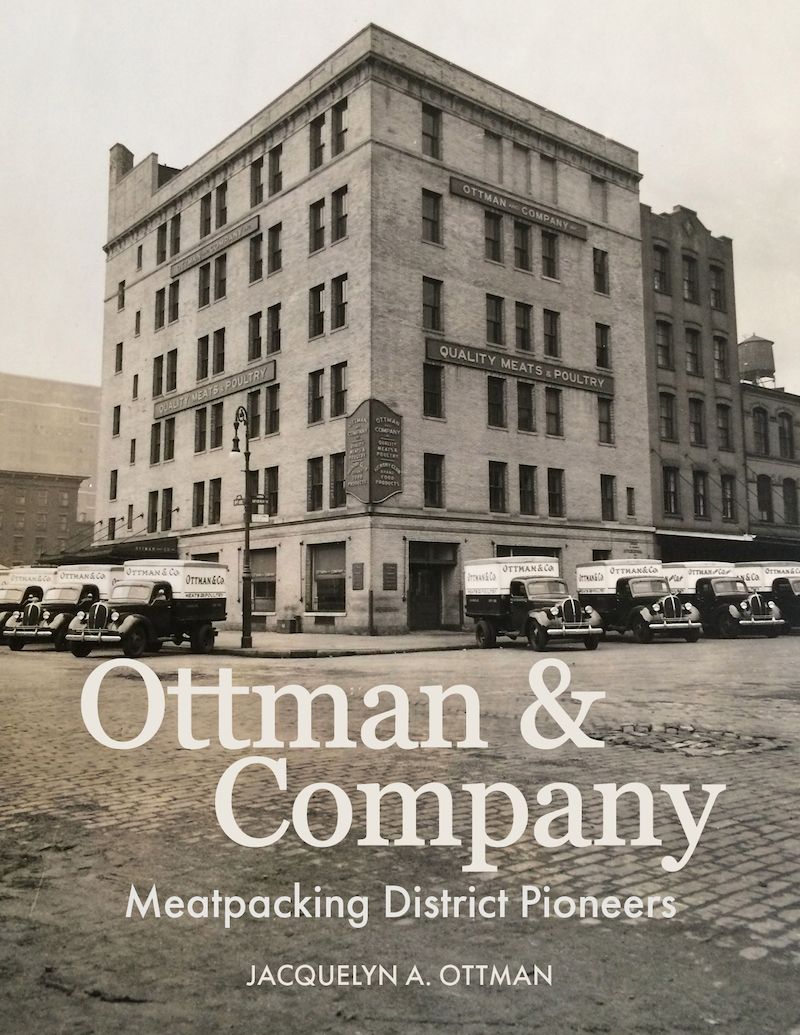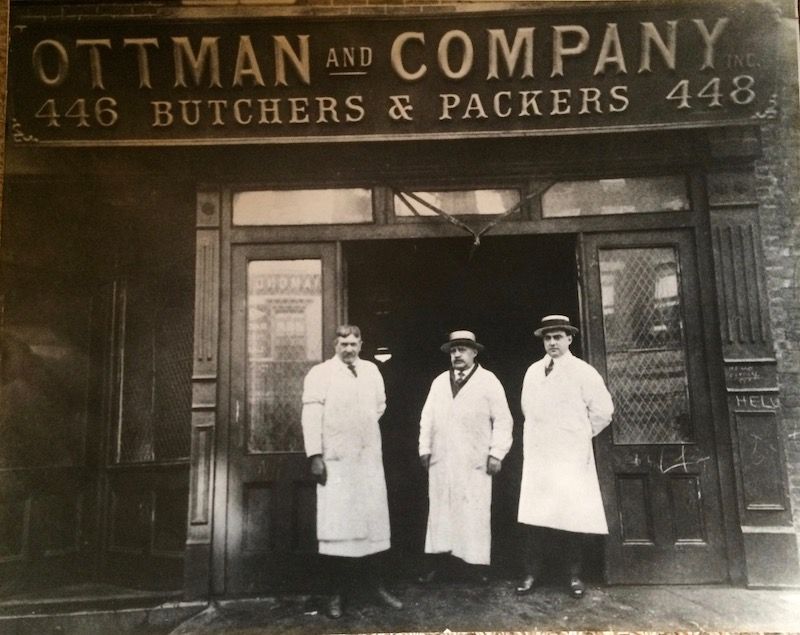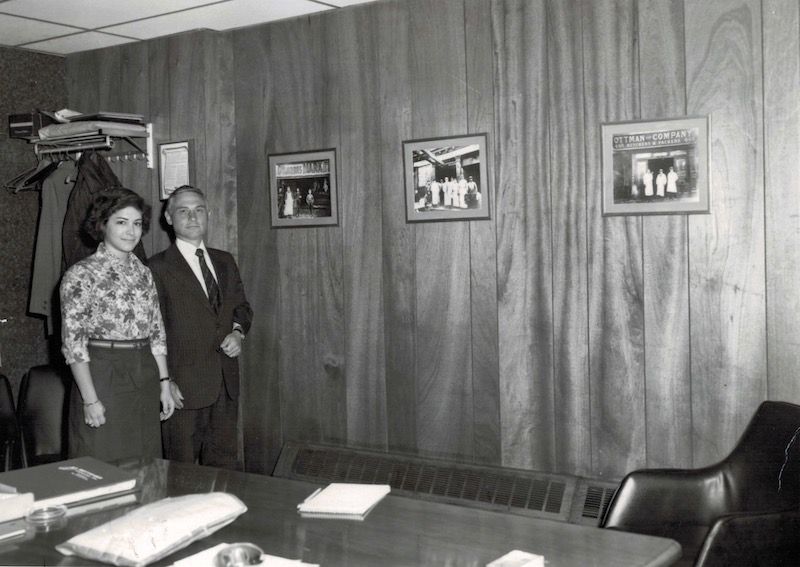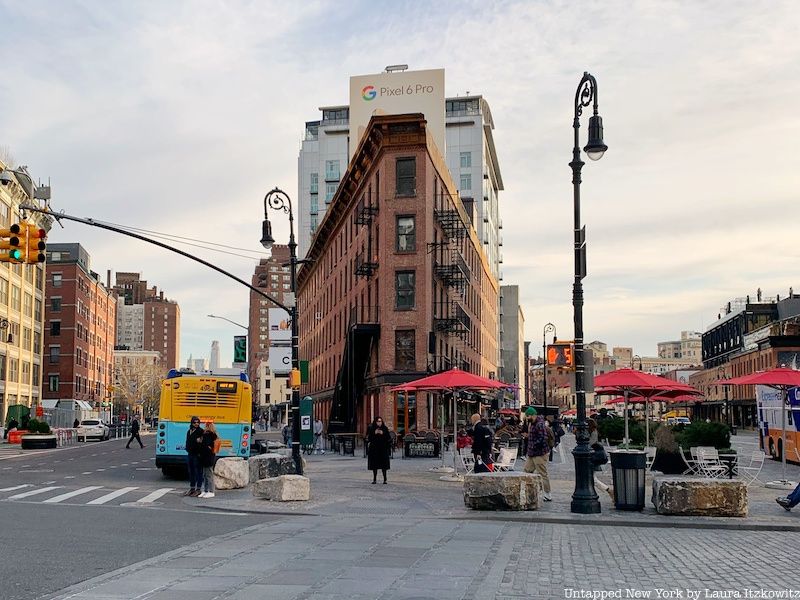Last-Minute NYC Holiday Gift Guide 🎁
We’ve created a holiday gift guide with presents for the intrepid New Yorker that should arrive just in time—


The Meatpacking District was thankfully landmarked in 2007, so generations of future New Yorkers and visitors can walk its Belgian brick-lined streets, stroll the High Line, and enjoy examples of architecture spanning four centuries of transformation. And photographers revel in taking the pictures of these wonderful old structures. But who’s telling the stories embedded in their walls and streets? That’s the self-appointed role Jacquie Ottman has assumed as her family’s archivist, storyteller and lover of New York City history.
Jacquelyn Ottman is a fifth generation New Yorker, and one of the last family members to work at Ottman & Company, the storied meat purveying firm who operated in the Meatpacking District during its entire history, from 1918 to 1985. Ottman still recalls seeing butchers dressed in long white coats racing across intersections pushing hand trucks, and metal canopies transporting meat inside on their long spans of hooks as the entire area came to life each morning.

Motivated by a desire to fill a gaping hole in New York City’s history, Ottman explains: “When the Meatpacking District became a hot place to go in the 2000s, I was disappointed — and frankly, astounded — to know that most people I quizzed had no idea what went on in the Meatpacking District before the glam and the glitz moved in. Slaughterhouses? Retailers? And no one really knew what a ‘meat purveyor’ was! That was the particular segment of the meatpacking industry that my family pioneered. Surely more people knew all about it!”
So, in 2016, she took it upon herself to tell her family’s story by writing a book, Ottman & Company: Meatpacking District Pioneers, and she’s been telling it ever since, via in-person and online talks, even a live walking tour. Attendees are treated to the inside story of her family’s impressive meat purveying firm, suppliers to New York’s finest hotels, restaurants, cruise ships, and later, airlines and executive dining rooms, since 1850.

Rare photos heretofore not shared with the public — with lots more packed away in her Upper East Side apartment — illustrate the historical facts, technical details and amusing anecdotes passed along from previous generations that Ottman seamlessly weaves into her talks, delivered with obvious passion and intelligence.
In addition to relating stories of such accomplishments as working with WR Grace, DuPont and Clarence Birdseye to leverage post World War II technological packaging innovations, Ottman delights in sharing details of the gorgeous architecture that her family’s business operated within. One of them is located at 2 Ninth Avenue.
Referring to it as the “grand dame” of the Meatpacking District, it was built in 1913 by William Vincent Astor as a six-story warehouse to serve the West Washington and Gansevoort market area. An excellent example of Arts & Crafts architecture, it was designed by LaFarge, Morris and Cullen, displays paired couplet and triplet windows, and is elegantly decorated under the cornice with red diamond-shaped tiles.
From 1913-1922, it served as a warehouse for the C. Percival provisions firm, which was established in 1868. In 1919, her grandfather’s fast growing Ottman & Company moved in from a prior location two blocks away, renting the first two floors and basement, then, in 1943, buying the entire building from Astor’s estate. Ottman recalls her grandmother telling her that they had learned there was space in the building from her father, who had served as a bookkeeper to Astor’s father, John Jacob Astor IV.

In 1964, Ottman & Company, then run by Jacquie’s father, John A. “Jack” Ottman, purchased the two adjacent buildings from Middendorf & Rohrs, a wholesale produce firm, which had occupied them for decades prior; at this time, Ottman combined all three buildings into one, as they stand today.
Ottman & Company used the taller building for manufacturing and state of the art refrigeration (requiring many of the windows to be bricked up at the time, since re-opened), and the two smaller ones as offices and dry storage. As a teen, Ottman worked in these offices. “I had fun subbing in for Gloria, our telephone operator, who ran our ten-line switchboard. I was only 17 years old, yet in the center of our 135-person operation.”

In 1986, Ottman sold the three-building unit to the Kleinknecht Company, an electrical and communications systems contractor who converted them into a state-of-the-art office complex and warehouse. It was purchased by a local developer in 2011. Later tenants have included the Lesbian and Gay Community Services Center and the Meatpacking outpost of We Work. Lucid, a luxury electric car showroom, occupies the first floor. It was restored in 2004 by FSI Architects.
Join us on June 21st at 12 p.m. for a virtual talk with Jacquelyn A. Ottman, fifth generation family member and author of Ottman & Company: Meatpacking District Pioneers. During her talk, Ottman will share much more about the fascinating history of the two smaller buildings, as well as the four-century transformation of the Meatpacking District, with roots extending back to the Lenape people, as well as many more details about her family’s business, including how their pioneering ways changed the way all of us eat in our kitchens today. This talk is free for Untapped New York Insiders (you can use code JOINUS to get your first month free of the membership).
Next, read about the top 10 secrets of the Meatpacking District!
Subscribe to our newsletter